Speedometer Not Working and ABS Light On – Causes and Fixes
In modern vehicles, the speedometer is connected to the ABS or anti-lock braking system to provide a more accurate speed reading. If there’s something wrong with any component of either system, you’ll face the issue of the speedometer not working.
So, why speedometer not working and ABS light on? Typically, faulty wheel speed sensors or blown ABS fuses are the main reason why your speedometer is malfunctioning and the ABS light is on. Bad wiring, faulty control module, and malfunctioning wheel bearings can also be the culprit. Thus, if none of these components appears to be malfunctioning, it can be a failing ECU.
Let’s dive into the details and find out the reasons why the speedometer and ABS of your car aren’t working. We will also explore the ways of detecting faulty parts and some possible fixes.
What Is ABS Light In Speedometer? – The Connection
First things first, let’s understand the functions of the speedometer and ABS light and see how they are connected. As the name suggests, the speedometer measures the speed of your vehicle. The ABS or Anti-lock Braking System light is a warning indicator on the dashboard of your car.
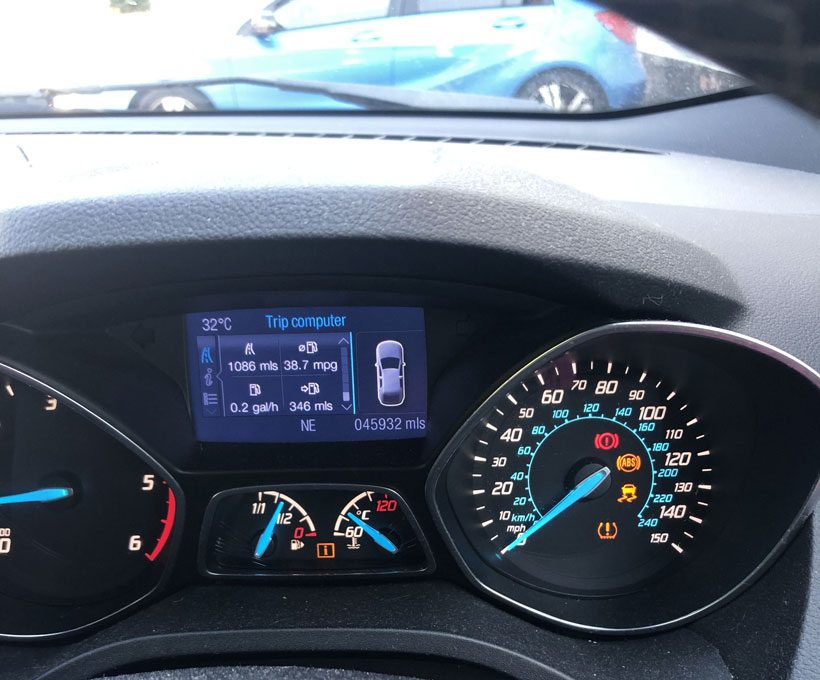
When this warning light illuminates, it means there is a problem with the ABS in the vehicle. In modern vehicles, the two systems share a few similar components. Why? As one user has pointed out, it makes both systems more accurate.
Both systems depend on the wheel speed sensors and the vehicle’s Electronic Control Unit or ECU to receive inputs and process related signals. As a result, if the speed sensors, ECU, or any other related part malfunction, the speedometer won’t work and the ABS lights will turn on.
Why Is Your Speedometer Not Working and ABS Light on? – Easy Fixes
Your vehicle’s speedometer and ABS are connected to several complex components. The speed sensor, speedometer cable and wiring, instrument cluster, and ECU are the common parts of both systems responsible for a malfunctioning speedometer or ABS.

Here are the common reasons why the ABS and speedometer malfunction-
1. Faulty Speed Sensors
To monitor your car’s rotational speed, there are four-wheel sensors mounted on each wheel or near the wheel hub. Here’s how the wheel speed sensors work.
They generate an electrical signal proportional to the wheel’s speed. With the attached cables and wiring, the signal is sent to both the speedometer and ABS.
If the sensors are damaged, worn out, or caught up in debris, the speedometer will fail to function. You can easily detect a failing speed sensor from a lit ABS light, check engine, and malfunctioning ABS.
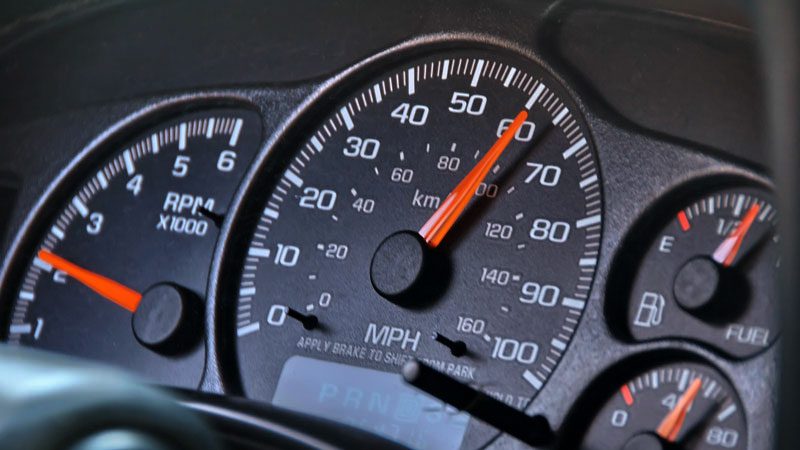
How to Fix?
Sometimes the speedometer issue goes away only by cleaning the sensors. However, if the sensor is damaged, you have to replace it. Here’s how to do it-
- First, locate the wheel sensors of your car. In most modern vehicles, the wheel speed sensors are typically located near the wheel hub or brake rotor. They are often positioned near your wheel’s axle or within the wheel bearing assembly.
- Now, lift your vehicle with a jack and remove the wheel.
- Unplug the electrical connector that attaches the sensor to the wiring harness. You can use pliers or a screwdriver to release any retaining clips.
- Typically, the sensor is held in place by bolts or screws. Use a socket set to remove the fasteners.
- After that, carefully pull the sensor out of its mounting location.
- On the other end of the cable, there might be a clip or clamp. Take it off and proceed to the next step.
- Insert the new wheel speed sensor into the mounting hole. Make sure it’s properly aligned and seated in the designated position. Reinstall any fasteners that secure the sensor in place.
- Finally, plug the electrical connector back into the wiring harness. Make sure it’s securely connected and the retaining clips are properly engaged.
2. Blown ABS Fuse
One automotive expert has suggested that, if your speedometer isn’t working and the ABS light is coming on, you must check the ABS fuses. The anti-lock braking system depends on electric signals and the fuses control the electricity flow.
As the ABS fuses are highly sensitive to overflow of electricity, they often get fused. If you have a failing ABS fuse in your car, it will show symptoms like jammed tires while driving, longer braking distance, or no brake at all.
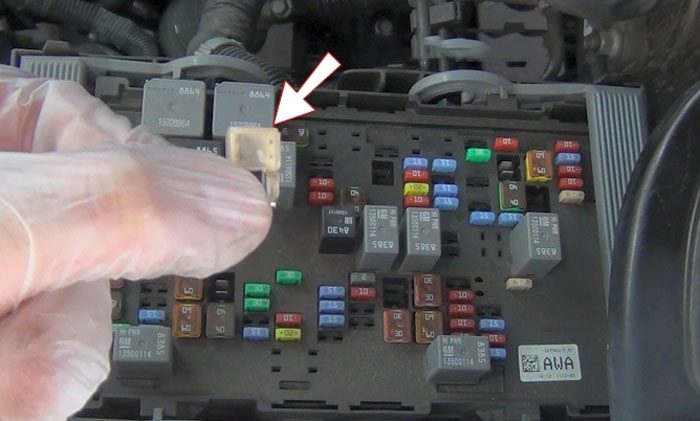
How to Fix?
As you can’t repair a blown fuse, you must replace it. Thankfully, the process is easy and doesn’t cost you much. Here’s how to replace a blown ABS fuse-
- First, you need to locate the fuse box of your car. It is usually located right under the dashboard or the glovebox on the driver’s side. It can also be inside the engine compartment. Check out your vehicle’s owner’s manual to find the exact location of the fuse box.
- Now, unplug your car battery and remove the car’s carpet and fuse box clips to take it out. Refer to your owner’s manual to find out the fuse labeled ‘ABS’ or ‘Anti Lock Brakes’ in the fuse box.
- Look for the blown or damaged fuse. It will be fully black with a broken wire inside. Use a fuse puller tool or a pair of pliers to pull out the blown fuse from its socket.
- Install the new fuse and connect it to the fuse box correctly. Make sure you place the fuse box and clips in their designated places when you’re done.
3. Bad Wiring
As mentioned, the electric signal collected from the speed sensors is transferred to the ECU through a number of wires and cables. Each cable coming from the sensors is connected to a common wiring harness. The wires run through the system and attach to the speedometer gauge or ABS.
When any of these wires, cables, or harnesses get damaged or corroded, the speedometer won’t display any readings and it will trigger the ABS light.
How to Fix?
Here, you need to locate the damaged wire or cable and replace it with a new one. While the replacement process is easy, locating the broken wire is a difficult task. Therefore, we recommend taking help from an expert mechanic.
4. Faulty Control Module
One key component of the ABS is the control module. This is the central processing unit of the ABS. It receives input from the wheel speed sensors and uses this information to determine whether any wheels are about to lock up.
If necessary, it sends commands to the hydraulic control unit to modulate brake pressure. So, when the control module fails, the system doesn’t receive the correct information triggering the ABS warning light.

How to Fix?
There are multiple solutions to this issue depending on the condition of your control module.
In some cases, resetting the control module will do the trick. To reset the module,
- First, drive your vehicle for 15 minutes to reach the optimal working temperature.
- After that, you need to disconnect the car battery.
- Now, press on your brake pedals for a few moments to drain out the electric system.
- When you’re done, reconnect the car battery and this should reset the control module.
If the unit isn’t fixable, you need to replace it. As the process is pretty complex, you must hire an expert mechanic for the replacement. The cost will range from $372 to $1,000, depending on the module’s price and labor cost.
5. Malfunctioning Wheel Bearings
In some vehicles, the wheel sensors are placed inside the wheel bearings. Wheel or hub bearings ensure that your car wheels are running smoothly.
When the wheel bearings corrode or get blocked by metallic debris, the sensor signal weakens. As a result, the speedometer shows the wrong reading and the ABS lights turn on.

How to Fix?
Again, try cleaning the wheel bearings and remove all the dirt and debris first. If it doesn’t fix the issue, you have to replace the wheel bearings. Replacing wheel bearings is a complex task and requires deep mechanical knowledge and experience.
Besides, you’ll need some expensive tools too. So, instead of trying to replace the wheel bearings yourself, take your vehicle to a professional mechanic.
6. ECU Failure
If none of the above-mentioned reasons applies to your vehicle, it might be the electric control module (ECU) that’s failing. The wheel speed sensors provide data to the ABS and it communicates with the ECU. Then the data is processed by the ECU and the final readings are displayed on your speedometer.
So, if the ECU is not functioning properly, it won’t receive or process the wheel speed sensor data correctly, resulting in inaccurate speedometer readings and malfunctioning ABS.
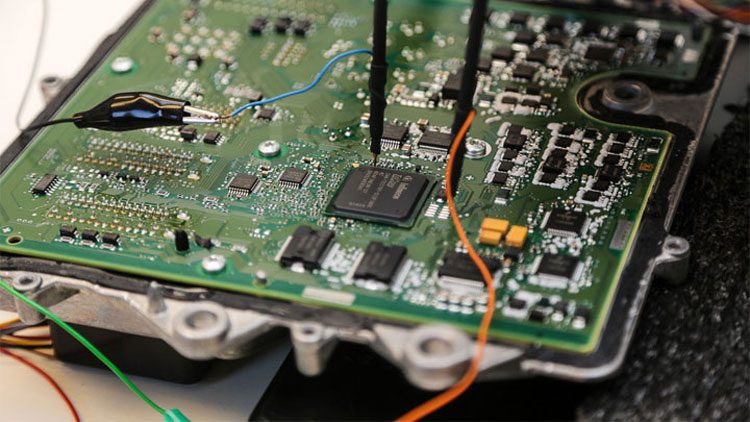
How to Fix?
First, use an OBD-II tool to see if there are any error codes in the ECU. In this case, you can try to reset the ECU. The error code can be different for various car models. For example, you’ll get the C0550 and C056D 00 codes for ECU failure on a Chevrolet.
As for the Ford truck, you’ll receive a U3000 code indicating the same issue. If you find any such codes, the system is faulty.
For this, disconnect the battery for a few minutes and reconnect it to reset the ECU. It will clear any temporary faults stored in its memory.
If the ECU isn’t fixed, have it repaired or replaced. Contact a qualified mechanic or an authorized service center to complete this task.
7. Low Brake Fluid
As mentioned, the ABS relies on the proper functioning of various components including the brake fluid. When the brake fluid level drops below the minimum required amount, the ABS module takes it as a potential leak in the reservoir.
Therefore, it triggers the ABS light to inform you of this issue and the speedometer might also stop working when the ABS light comes on.
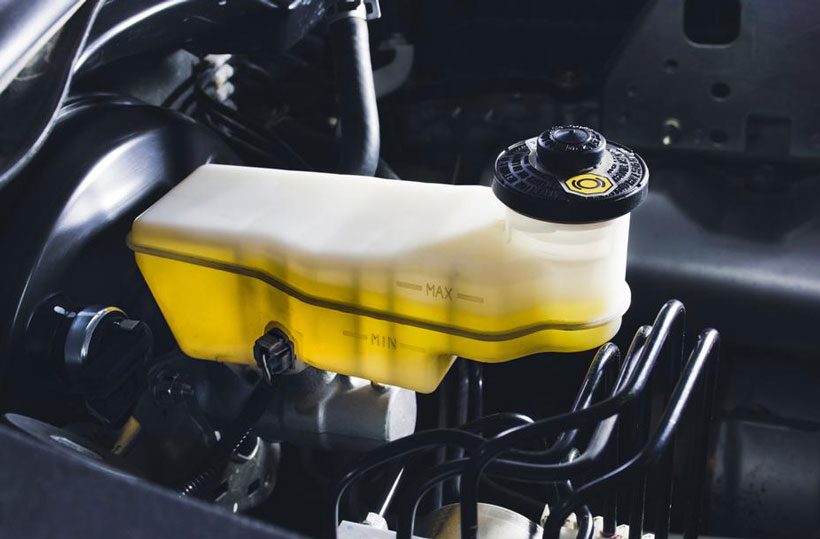
How to Fix?
To get rid of the ABS light, all you have to do is fill your brake fluid reservoir. Check out the required level of brake fluid and make sure you fill the reservoir up to the optimal level.
8. Failing Instrument Cluster
Your vehicle depends on the instrument or dashboard cluster to display the speed ratings. It also shows important information like the fuel level, engine temperature, and warning lights.
When the instrument cluster fails, it leads to several issues including the speedometer not working, providing inaccurate readings, and triggering warning lights.
How to Fix?
If you’re lucky, a battery reset might fix this issue. For this, disconnect the vehicle’s battery for a few minutes and then reconnect it. It can reset the instrument cluster and resolve minor issues.
In case it didn’t work, you need to seek professional help to repair the faulty components within the instrument cluster.
9. Worn Out Brake Pads/Rotors
Over time, the brake pads and rotors of your vehicle wear out. The friction material of the pads and rotors becomes thinner, reducing the distance between the sensor and the brake rotor.
If the brake pads are excessively worn, the sensor can come into contact with the rotor. As a result, the wheel sensors send inaccurate ratings, triggering the ABS light.

How to Fix?
As you can’t repair worn-out brake pads and rotors, you need to replace them. For this, follow the given steps-
Step 1: Raise your car with a jack and place it in a comfortable position. Remove the wheel lug nuts to release the wheel
Step 2: Locate the brake caliper assembly. You’ll see a number of bolts or pins holding the caliper. Remove the bolts or pins to release the caliper
Step 3: Carefully remove the brake pads from the caliper bracket
Step 4: Inspect the rotor for any damage or excessive wear. If necessary, remove the rotor by unfastening any retaining screws or bolts
Step 5: Now it’s time to install the new pads and rotors. First, place new rotors onto the wheel hub and secure them in place. After that, install the new brake pads into the caliper bracket. Make sure they are properly positioned and aligned
Step 6: Replace the brake caliper and repeat the process for other wheels if necessary. When you’re done, reinstall the wheels
If you’re experiencing both a speedometer not working and ABS light on issue in your vehicle, you may find our article on ABS light still on after sensor replacement helpful. This article provides insights and potential solutions for addressing the ABS light staying on even after replacing the sensor. Additionally, if you own a Chevy Impala and are dealing with an ABS light on problem, you can check out our article on Chevy Impala ABS light on for specific information and guidance related to this particular vehicle.FAQs
Here are a few more additional questions you might be asking now.
No, the ABS pump does not typically affect the speedometer. The Anti-lock Braking System (ABS) pump controls the hydraulic pressure in the brake system to prevent wheel lock-up during braking.
While it doesn’t directly affect the speedometer, the ABS pump can interfere with the speedometer’s function in some rare situations.
Some common factors that can potentially damage an ABS sensor include physical damage, metallic debris buildup, moisture and corrosion, loose wiring, and dirt contamination.
Yes, you can drive your car without ABS. If your car’s ABS is not functioning correctly or has been disabled, the standard braking system will still work. Hence, you’ll be able to stop your vehicle using the conventional braking method.
Final Words
So, that was all about the speedometer not working and ABS light on issue. If you’re facing this problem, first, you need to check out your wheel speed sensors and fuse box. Inspect the wires and cables, ABS control module, and ECU as well to see if these parts are working.
When you locate the faulty component, repair or replace it as necessary. If your knowledge is limited, be sure to contact a professional mechanic to fix the car for you.

